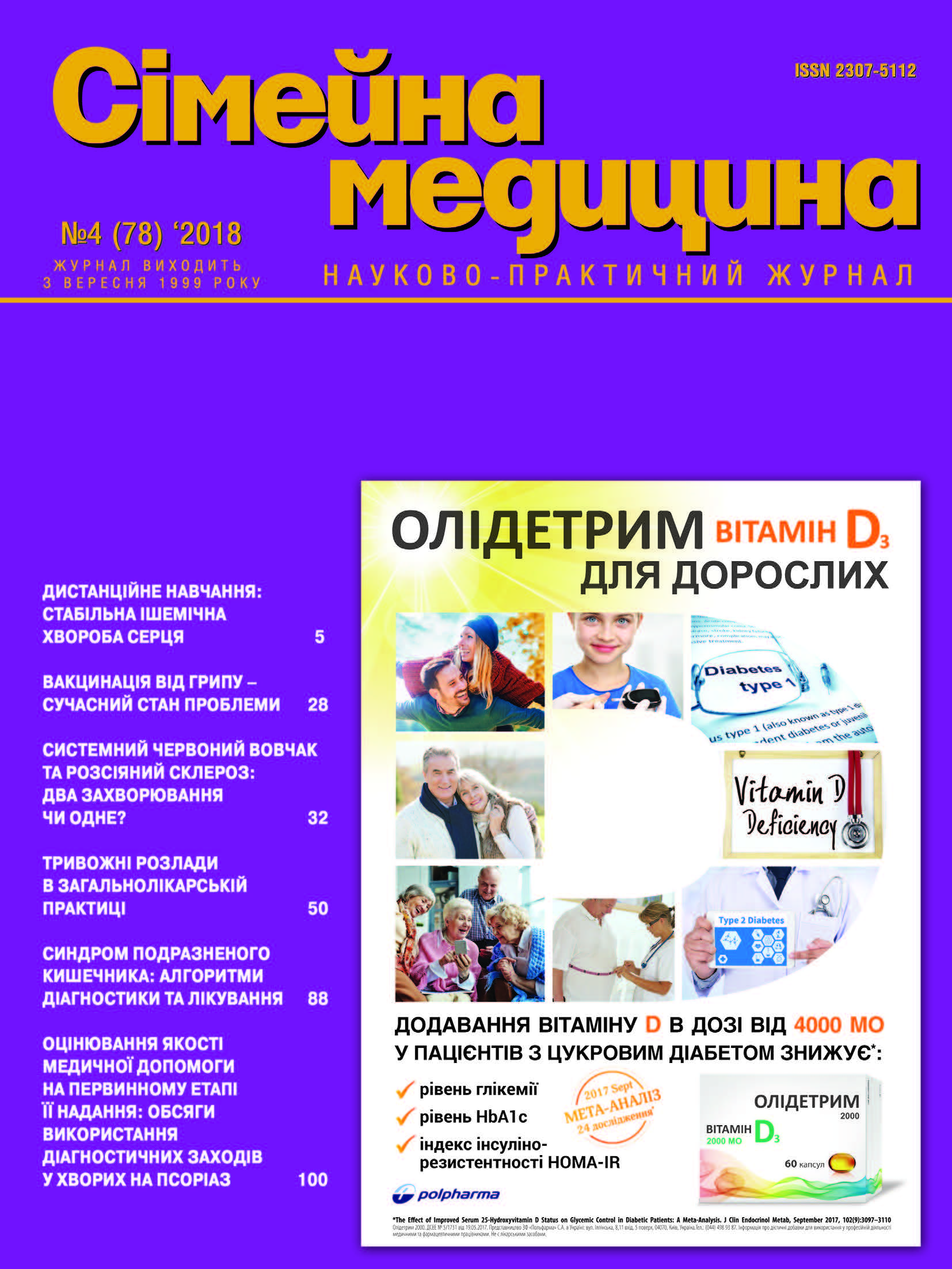Histological and Immunohistological Features of Reccurences in Patients with High Grade Diffuse Astrocytic Tumors
##plugins.themes.bootstrap3.article.main##
Abstract
The objective: to study recurrences of high grade diffuse astrocytic tumors and to attempt to create some recommendations for their following treatment.
Materials and methods. 25 relapsed cases were investigated. 15 of them were early recurrences and 10 were late recurrences. The primary tumor specimens from patients with early recurrences were additionally examined to value tumor transformation. Case histories of patients were studied retrospectively. The histological investigation and immunohistochemistry were performed. Immunohistochemical analysis included expression of 12 markers: GFAP, Anti-IDH1R132H, vimentin, EGFR, Ki-67, MMP-9, VEGF,CD34, CD3,CD4, CD8, CD68. Mutation IDH1105GGTSNP was detected through molecular analysis. Statistical analysis was used to value quantitative and qualitative data. Tumor transformation in paired samples was valued with the McNemar test.
Results. The one case of pseudoprogression was found among all studied recurrences. Post-treatment effects were more common in early recurrences rather than for late recurrences. In early relapsed tumors, a significant increase of CD8-cell infiltration was observed (McNemar test p-value=0,01343; p <0,05). The index of vascularisation was significantly higher in early recurrences (Mann-Whitney U test, р exect=0,016, р<0,05). There was a strong direct correlation between the index of vascularisation and the percentage of tumor cells expressed MMP-9 (rs=0,893, р<0,05). The mutation IDH1105GGTSNP related to cases of late recurrences (Mann-Whitney U test; p=0,043 p<0,05).
Conclusion. It is important to distinguish pseudoprogression from true progression because it leads to a different treatment strategy. The knowledge of proliferative, vascular and invasive features of the relapsed tumor, the study of their immune response will make possible to create and to put into practice the effective personalized treatment for patients with high grade astrocytomas.##plugins.themes.bootstrap3.article.details##

This work is licensed under a Creative Commons Attribution 4.0 International License.
Authors retain the copyright and grant the journal the first publication of original scientific articles under the Creative Commons Attribution 4.0 International License, which allows others to distribute work with acknowledgment of authorship and first publication in this journal.
References
Практические рекомендации по лекарственному лечению первичных опухолей центральной нервной системы / [Г.Л. Кобяков, А.Х. Бекяшев, А.В. Голанов и др.] // Злокачественные опухоли: Практические рекомендации RUSSCO / [Г.Л. Кобяков, А.Х. Бекяшев, А.В. Голанов и др.]. – Москва, 2017. – С. 80–82. PDF
CBTRUS statistical report: primary brain and other central nervous system tumors diagnosed in the United States in 2010–2014. / [Q.T. Ostrom, H. Gittleman,P. Liao et al.] // Neuro-oncology. – 2017. – № 19. – P. 1–88. https://doi.org/10.1093/neuonc/nox158
Characterization of pseudoprogression in patients with glioblastoma: is histology the gold standard? / [I. Melguizo-Gavilanes, J. Bruner, N. Guha-Thakurta та ін.] // J Neurooncol. – 2015. – № 123. – P. 141–150. https://doi.org/10.1007/s11060-015-1774-5
L. Rowe, J. Butman, M. Mackey et al. Differentiating pseudoprogression from true progression: analysis of radiographic, biologic, and clinical clues in GBM // Journal of Neuro-Oncology. – 2018. – 139(1). – P. 145–152 https://doi.org/10.1007/s11060-018-2855-z
Ellis L. VEGF-targeted therapy: mechanisms of anti-tumour activity / L. Ellis, D. Hicklin // Nature Reviews Cancer. – 2008. – № 8. – P. 579–591. https://doi.org/10.1038/nrc2403
Expression of EGFR in paired new and recurrent glioblastomas / [A. Cioca, E.G. Olteanu, M.D. Gisca etc.] // Asian Pac J Cancer Prev. – 2016. – № 17. – P. 4205–4208. PDF
Fuchs E. A structural scaffolding of intermediate filaments in health and disease / E. Fuchs, D.W. Cleveland // Science. – 1998. – № 279. – P. 514–519. http://dx.doi.org/10.1126/science.279.5350.514
Gomez G.G. Mechanisms of malignant glioma immune resistance and sources of immunosuppression / G.G. Gomez, C.A. Kruse // Gene Ther. Mol. Biol. – 2006. – № 10. – P. 133–146. PDF
Haouraa Mostafa, Andrej Pala, Josef Högel. Immune phenotypes predict survival in patients with glioblastoma multiforme. // Journal of Hematology & Oncology. – 2016. – 9(1). – P. 77 https://doi.org/10.1186/s13045-016-0272-3
High levels of cellular proliferation predict pseudoprogression in glioblastoma patients / [H.B. Pouleau, N. Sadeghi, D. Baleriaux та ін.] // Int J Oncol. – 2012. – № 40. – P. 923–928. https://dx.doi.org/10.3892%2Fijo.2011.1260
Jiangkai L. Effect of vimentin on reactive gliosis: in vitro and in vivo analysis / L. Jiangkai, C. Wenqin. // Journal of Neurotrauma. – 2004. – № 11. – P. 1671–1682. https://doi.org/10.1089/neu.2004.21.1671
R. Magaña-Maldonado, E.G. Chávez-Cortez, N.K. Olascoaga-Arellano. Immunological Evasion in Glioblastoma // BioMed Research International. – 2016. http://dx.doi.org/10.1155/2016/7487313
Nana A.W. Overview of transforming growth factor β superfamily involvement in glioblastoma initiation and progression / A.W. Nana, P.M. Yang, H.Y. Lin // Asian Pac J Cancer Prev. – 2015. – № 16. – P. 6813–23. https://doi.org/10.7314/APJCP.2015.16.16.6813
Ohgaki H. Population-based studies on incidence, survival rates, and genetic alterations in astrocytic and oligodendroglial gliomas / H. Ohgaki, P. Kleihues. // J Neuropathol Exp Neurol. –2005. – № 64. – P. 479–489. https://doi.org/10.1093/jnen/64.6.479
Prevalence of the single-nucleotide polymorphism rs11554137 (IDH1105GGT) in brain tumors of a cohort of Italian patients / [G. Acquaviva, M. Visani, D. de Biase et al.] // Scientific Reports. – 2018. – № 8. – P. 44–59. https://doi.org/10.1038/s41598-018-22222-y
Survival and Prognostic Factors of Anaplastic Gliomas / [M. Nuño, K. Birch, D. Mukherjee et al.] // Neurosurgery. – 2013. – № 73. – P. 458–465. https://doi.org/10.1227/01.neu.0000431477.02408.5e
The 2016 World Health Organization Classification of Tumors of the Central Nervous System: a summary / [D. Louis, A. Perry, G. Reifenberger et al.] // Acta Neuropathologica. – 2016. – № 131. – P. 803–820. https://doi.org/10.1007/s00401-016-1545-1
Wang X.W. Prognostic impact of the isocitrate dehydrogenase 1 singlenucleotide polymorphism rs11554137 in malignant gliomas / Wang. // Cancer. – 2013. – № 119. – P. 806–813. https://doi.org/10.1002/cncr.27798
WHO Classification of Tumours of the Central Nervous System / [D.N. Louis, H. Ohgaki, O.D. Wiestler et al.] – Lyon: IARC, 2007. – 312 p.





